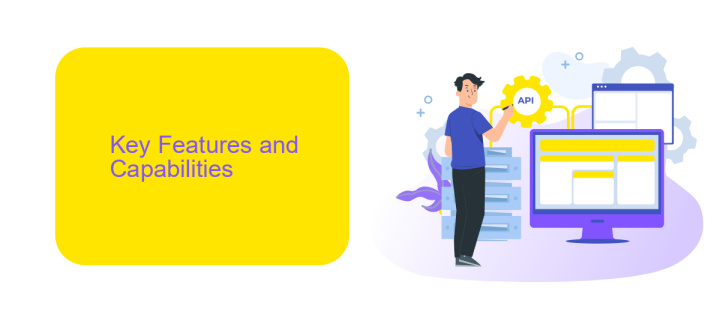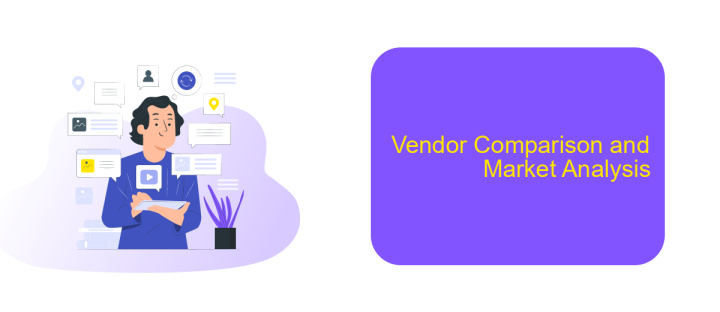Best Data Integration Tool
Selecting the best data integration tool is crucial for businesses aiming to streamline their processes and enhance data-driven decision-making. With numerous options available, finding the right tool can be challenging. This article explores the top data integration tools, highlighting their features, benefits, and how they can help you achieve seamless data integration across your organization.
Introduction and Overview
In today's data-driven world, the ability to seamlessly integrate disparate data sources is crucial for businesses aiming to make informed decisions. Data integration tools simplify this process by consolidating data from various platforms, ensuring that organizations have a unified view of their information landscape.
- Automated data synchronization
- Real-time data access
- Enhanced data quality and consistency
- Scalability to handle growing data volumes
One of the standout solutions in this space is ApiX-Drive, a versatile tool designed to streamline the integration process. ApiX-Drive offers a user-friendly interface and robust features that allow businesses to connect multiple applications and automate data flows without requiring extensive technical expertise. By leveraging such tools, companies can focus on deriving actionable insights rather than getting bogged down by the complexities of data management.
Key Features and Capabilities

The best data integration tools offer a range of key features and capabilities designed to streamline data management and enhance operational efficiency. These tools typically provide seamless connectivity with a wide array of data sources, including databases, cloud services, and on-premises applications. They support real-time data synchronization, ensuring that information is consistently up-to-date across all platforms. Additionally, advanced data transformation capabilities allow users to clean, enrich, and standardize data before integration, improving data quality and reliability.
Another critical feature is the user-friendly interface that simplifies the setup and management of integrations, often without the need for extensive coding knowledge. For instance, ApiX-Drive is a powerful service that enables users to effortlessly configure integrations between various applications through an intuitive dashboard. Security and compliance are also paramount, with robust encryption and access controls to protect sensitive data. Furthermore, these tools often include monitoring and alerting functionalities, providing real-time insights into integration performance and potential issues, ensuring smooth and uninterrupted data flow.
Benefits and Use Cases

Data integration tools have become essential for businesses looking to streamline their operations and improve data accessibility. These tools offer numerous benefits, including enhanced data accuracy, reduced manual effort, and improved decision-making capabilities.
- Enhanced Efficiency: Data integration tools automate the process of combining data from multiple sources, saving time and reducing the risk of errors.
- Improved Data Quality: By ensuring consistent data formats and eliminating duplicates, these tools enhance the overall quality of the data.
- Better Decision Making: Access to integrated data allows for more informed and timely business decisions.
- Scalability: These tools can handle increasing volumes of data as your business grows, ensuring they remain effective over time.
- Cost Savings: Automating data integration reduces the need for manual data handling, leading to significant cost savings.
One notable example is ApiX-Drive, a service that simplifies the integration process by allowing users to connect various applications without any coding knowledge. This makes it an excellent choice for businesses of all sizes looking to leverage data integration to its fullest potential. Whether it's syncing CRM data, automating marketing workflows, or consolidating financial information, the right data integration tool can transform how a business operates.
Vendor Comparison and Market Analysis

Choosing the right data integration tool is crucial for any organization aiming to streamline its operations and improve data accessibility. With numerous vendors in the market, it can be challenging to identify the best fit for your specific needs. In this section, we will compare top vendors and analyze the current market trends.
Several key players dominate the data integration market, each offering unique features and capabilities. These tools vary in terms of scalability, ease of use, and integration options. The following is a comparison of some of the leading data integration tools available today:
- Informatica PowerCenter: Known for its robust ETL capabilities and enterprise-grade performance.
- Talend: Offers open-source solutions with a focus on big data and cloud integration.
- ApiX-Drive: A user-friendly solution for automating workflows and integrating various applications without coding.
- Microsoft SQL Server Integration Services (SSIS): Ideal for organizations already using Microsoft technologies.
Market analysis indicates a growing demand for cloud-based and real-time data integration solutions. Tools like ApiX-Drive are gaining popularity due to their ease of use and ability to quickly set up integrations without requiring extensive technical knowledge. As businesses continue to prioritize agility and efficiency, the trend towards more intuitive and versatile data integration tools is expected to continue.


Best Practices and Implementation Considerations
When implementing a data integration tool, it's crucial to start with a thorough assessment of your current data landscape and integration needs. Identify the data sources, formats, and workflows that are essential for your organization. Establish clear goals and metrics for success to ensure that the integration aligns with your business objectives. Consider utilizing a versatile tool like ApiX-Drive, which offers a wide range of integrations and user-friendly setup processes, making it easier to connect various applications and automate workflows without extensive technical knowledge.
Additionally, ensure robust data governance and security measures are in place to protect sensitive information during the integration process. Regularly monitor and maintain the integrations to address any issues promptly and optimize performance. Training your team on the new system is also vital to maximize the tool's benefits. ApiX-Drive provides comprehensive support and documentation, which can be invaluable during the implementation phase. By following these best practices, you can achieve a seamless and efficient data integration process that enhances your organization's overall data strategy.
FAQ
What is a data integration tool?
Why is data integration important for businesses?
Can I automate data integration processes?
What factors should I consider when choosing a data integration tool?
Is it possible to integrate data without coding skills?
Do you want to achieve your goals in business, career and life faster and better? Do it with ApiX-Drive – a tool that will remove a significant part of the routine from workflows and free up additional time to achieve your goals. Test the capabilities of Apix-Drive for free – see for yourself the effectiveness of the tool.

